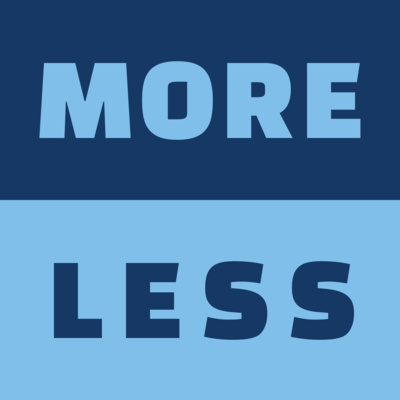
The Economic Gender Gap in the Middle East and the Sustainable Development Goals (SDGs)
Introduction
The economic gender gap in the Middle East is one of the largest in the world. The expansion of vocational training programs and the establishment of numerous multinational corporations throughout the region have increased labor opportunities for many people. Yet, amid these growing job opportunities, a multitude of cultural and political inhibitions affect women entering the work force. Although initiatives led by UN Women and the International Labour Organization (ILO) have been instituted in countries such as Jordan, structural barriers to entry persist.
Current Situation
In 2022, the World Bank reported that women in the Middle East made up just 19 percent of the labor force—one of the lowest percentages in the world. This rate varies by country:
- Egypt: 15 percent
- Iraq: 11 percent
- Jordan: 15 percent
- Kuwait: 48 percent
- Lebanon: 29 percent
- Morocco: 21 percent
- Qatar: 60 percent
- Saudi Arabia: 28 percent
- Tunisia: 26 percent
- United Arab Emirates: 55 percent
- West Bank and Gaza: 19 percent
Jordan, despite having one of the highest female literacy rates in the region (recorded at 100 percent in 2021), has one of the lowest rates of female labor-force participation. The average female literacy rate in the Middle East overall in 2022 was recorded at 88 percent, placing Jordan well ahead of the curve. Important factors such as social norms, misinformation, employer discrimination, and social norms have affected female labor-force participation in Jordan.
The World Bank reported that women in the Middle East made up just 19 percent of the labor force in 2022
Poor work conditions or family pressures—such as childbearing and child rearing—and structural barriers—such as childcare issues and long work hours—have either inhibited or pushed women out of the labor market. Women also face employer discrimination. In Egypt, for example, employers in a study by J-PAL voiced their preference for hiring men over women. Despite women’s high level of training and education in various professions, women continue to feel inferior to men and are often expected to work socially acceptable hours (9:00 a.m. to 5:00 p.m.) that will not interfere with their responsibilities at home. When asked, more than 60 percent of Jordanian men and women surveyed by the World Bank in 2018 state that it is unacceptable for women to work in the same spaces as men and 70 percent said it was socially inappropriate to take a job that requires women to work past 5:00 p.m. Women’s experiences in the labor force vary across classes, religions, and ethnicities. This patriarchal bargain, a term coined by Deniz Kandiyti, constrains women, yet they are seen as having agency and the opportunity to strategize and develop their autonomy. Hence the structural barriers that exist are norms that have persisted, but Jordanian women—and women throughout the region—can shape the landscape of the labor market by requiring the enforcement of protections from sexual harassment, proper childcare, and transportation to and from the workplace.
Women’s experiences in the labor force vary across classes, religions, and ethnicities
What Next?
Women in the Middle East have entered the labor force out of college with positions in sectors including health care, agriculture, public administration, and education—jobs that make up more than 65 percent of the female labor force. Recent studies, however, show that women remain marginalized in work environments, which, in turn, harms gross domestic product growth in the region. Moreover, the unemployment rate among Arab women is 42.5 percent, three times the average of the global unemployment rate of 14.9 percent and twice that of Arab men at 25 percent. In addition, the International Monetary Fund ranked Jordan as 126 out of 146 countries on its 2023 Global Gender Gap Index. Despite reforms within the education system and initiatives such as the Queen Rania Foundation for Education and Development, Jordan still struggles to close the gap in the workforce. Much of this work is related to the societal pressures on women in the form of childcare and household work. In this form of labor, women are unpaid and overrepresented.
In the World Bank’s “World, Business, and the Law” report, Jordan’s index ranks at 46.9 out of 100. This index measures reforms made by countries toward gender equality. Although a high literacy rate might suggest otherwise, Jordan still struggles to bridge the inequity and inequality between genders. Other Middle East countries have enacted national gender inequality strategies including the National Strategy for Women in Lebanon and the Egyptian National Council for Women Strategy for Gender Equality. Jordan, like its regional counterparts, has worked toward reforms supported through UN Women and the ILO to find ways to address the growing labor-force concern. As the country with one of the highest literacy rates in the region, Jordan exemplifies the work that lies ahead for bridging workplace
SDGs, Targets, and Indicators
1. Which SDGs are addressed or connected to the issues highlighted in the article?
- SDG 5: Gender Equality
- SDG 8: Decent Work and Economic Growth
2. What specific targets under those SDGs can be identified based on the article’s content?
- SDG 5.5: Ensure women’s full and effective participation and equal opportunities for leadership at all levels of decision-making in political, economic, and public life.
- SDG 8.5: By 2030, achieve full and productive employment and decent work for all women and men, including for young people and persons with disabilities, and equal pay for work of equal value.
3. Are there any indicators mentioned or implied in the article that can be used to measure progress towards the identified targets?
- Indicator for SDG 5.5: Proportion of women in the labor force.
- Indicator for SDG 8.5: Unemployment rate among women.
Table: SDGs, Targets, and Indicators
| SDGs | Targets | Indicators |
|---|---|---|
| SDG 5: Gender Equality | Target 5.5: Ensure women’s full and effective participation and equal opportunities for leadership at all levels of decision-making in political, economic, and public life. | Indicator: Proportion of women in the labor force. |
| SDG 8: Decent Work and Economic Growth | Target 8.5: By 2030, achieve full and productive employment and decent work for all women and men, including for young people and persons with disabilities, and equal pay for work of equal value. | Indicator: Unemployment rate among women. |
The article highlights the economic gender gap in the Middle East and the barriers faced by women in entering the workforce. This is directly connected to SDG 5: Gender Equality, which aims to ensure equal opportunities for women in all aspects of life. Additionally, the article discusses the expansion of vocational training programs and labor opportunities, which aligns with SDG 8: Decent Work and Economic Growth.
Based on the content of the article, specific targets under these SDGs can be identified. Target 5.5 focuses on women’s full and effective participation in economic life, while target 8.5 aims to achieve full and productive employment for all women and men. These targets address the barriers and inequalities faced by women in the labor force.
The article mentions indicators that can be used to measure progress towards these targets. The proportion of women in the labor force is an indicator for target 5.5, reflecting the level of women’s participation in economic activities. The unemployment rate among women serves as an indicator for target 8.5, indicating the extent to which women have access to decent work opportunities.
Behold! This splendid article springs forth from the wellspring of knowledge, shaped by a wondrous proprietary AI technology that delved into a vast ocean of data, illuminating the path towards the Sustainable Development Goals. Remember that all rights are reserved by SDG Investors LLC, empowering us to champion progress together.
Source: thinkglobalhealth.org

Join us, as fellow seekers of change, on a transformative journey at https://sdgtalks.ai/welcome, where you can become a member and actively contribute to shaping a brighter future.






